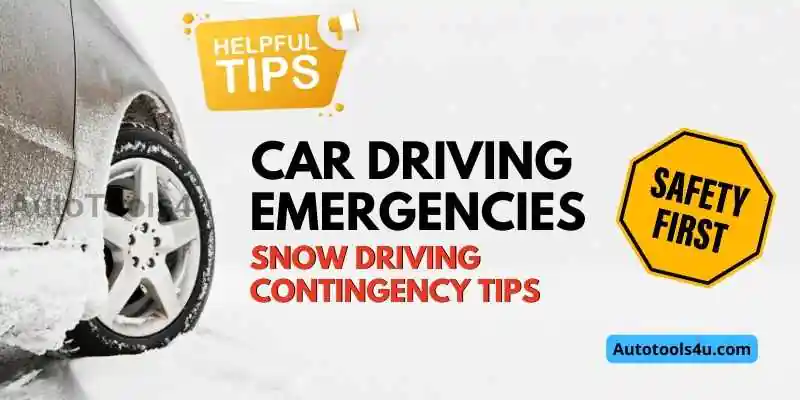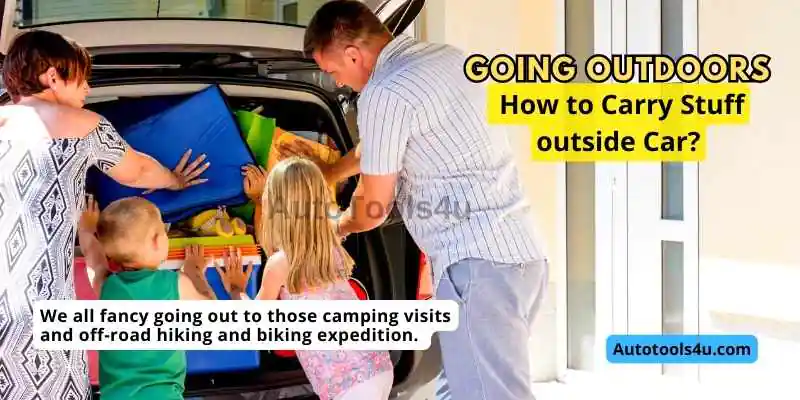we shall discuss some of the potentially dangerous situations that you may encounter as a driver, such as hydroplaning, snow driving tips, and car breakdowns. We can never predict when and where we are going to come across situations but we can prepare for them as much as we can.
1.1 Car Hydroplaning – How to Act and Recover
Hydroplaning is the act of essentially managing to somehow drive over a water layer and consequently losing full or partial control of the car.
Rainy season can be a nuisance anyway, especially the heavy rain showers could bring loads of surface water and hazards to the driving. In a country like the UK, rain is a pretty likely occurrence and outcome on any day and it could be just standard drizzle or be more like tropical thunderstorms. It’s the latter we should worry about more as more water is poured onto roads via rains than can be drained by storm drains. This situation can create hazardous water puddles, especially on the outside lanes consistent with the road camber. There are a few factors to look for which would affect the severity of the hydroplaning:
- Severity and size of the water patch. The bigger the area of water more likely is the hazard of hydroplaning.
- As many times as we say it, we cannot stress it enough, speed of the car. It’s a brainer, the faster the car, the more the hydroplaning hazard is.
- Tyre condition which constitutes tread depth and inflated pressure. The less the tread depth is, the more likely is the hazard.
There are few things to do or not do when encountered with this potentially dangerous situation.
- Try to speed down as much as possible while driving in wet conditions. If it is really coming down, do not drive on the outer lanes where puddles tend to form. If you have happened to land on one, slow down and do it gently.
- Take your foot off the gas or put it very lightly. Try the temptation to press the accelerator to get out of this situation quickly.
- What you do, do not break excessively. This might result in a complete loss of control.
- Try turning off the cruise control in potentially hazardous conditions. Cruise control tends to maintain speed in whatever condition and are not intelligent enough to differentiate between normal and hazardous driving conditions.
1.2 Car Snow driving Tips – How to Act and Recover
It’s generally a good idea not to drive in heavy or even light snow. Especially, the first week of snowing can bring havoc to the road if the city is not prepared enough. But if you do have to go there are a few things you can look into.
To remember – Snow Driving Tips
- Try travelling on major roads. They are looked after and gritted as they fall higher in the priority. Do not go onto side or minor roads unless you have to.
- If the snow is heavy enough and consistent, try to consider putting on specialist snow tyres.
- It’s normally the rear side and tyres of the car which start losing control first in snow conditions. Put something heavy in your car boot to stabilize the car better. The car is weighed down in front by the engine and supplementing this with something heavy in the car boot would provide additional stability to the rear side of the car.
- Even worst than snow, Black ice is a serious hazard for drivers, cyclists and pedestrians alike, and they don’t call it black for anything, you cant see it at all. It’s a transparent layer of water frozen overnight on-road and walkways and presents a serious challenge to all road and walkway users. Unfortunately, it cannot be seen and even predicted easily. If it has been below zero and rained before that, next morning is likely to have this condition on solid outdoor surfaces. If the surface is gritted risk is reduced but not completely. All you can do is drive very slowly on the side and built-up road and be extra cautious.
- Make sure your car tyres are in the best possible shape.
- If you somehow end up driving on snow or ice, go very slow and keep a great distance to the next car. We recommend NO use of brakes at all, if you did ABS system would kick in anyway and try to regulate the brake pressure in order not to skid.
- If you do skid on ice or snow, don’t panic and do not break. Steer in the direction of the skid. That means if the car rear side is drifting towards the right, steer your car on the right side as well to counter the skid movement.
- we hope that these snow driving tips will help you understand and respect the danger this situation potentially presents and prepare you to deal with it.
1.3 Things to do – Car Break Down
- Find somewhere safe to stop.
- The most suitable place would be a layby or side parking but that isn’t always possible.
- If on a motorway, try pulling in the hard shoulder
- On a smart motorway, there is no hard shoulder. Look for emergency stop areas. If that is not possible, leave the car in the left-most lane and move away as much as possible.
- Immediately enable hazard lights and use traffic or safety cones behind the car if you have them. If on a motorway hard shoulder, don’t risk putting traffic cones.
- It’s safer to move away from the car if you are in the motorway and able to pull in safely.
- If on a motorway or major road, and you broke down in the speed lane, it’s an extremely hazardous situation. Stay in the car and dial emergency as soon as possible.
- If you have access to try putting on high visibility safety jacket or vest.
- Once all that above is achieved you may contact your recovery service.
1.4 How to change Busted tyre?
- Make sure you carry a spare tyre of the right size and inflate it to correct pressure.
- If the tyre does go flat find somewhere safe to stop and activate the hazard lights.
- If you have traffic cones, put them behind the car to let other drivers know of the situation.
- Call the recovery service is available, it’s best they deal with it as it’s safer. This is especially when it’s dark. It’s not worth it to do it yourself when conditions are dark and other road users cannot see your property.
- If you have no access to car recovery, prepare yourself and your car.
- Activate the hand brake or parking gear, whichever is applicable.
- Before even starting, make sure you got a car jack and wheel nut spanner. A suitable work light if it is nighttime.
- Once the car is secured using a wheel spanner try to release the nuts but don’t completely remove them yet.
- Use the car jack to lift the side of the car. Try spotting the reinforced lifting point underneath.
- Once the car is lifted nor removed the flat tyre.
- Replace the spare good tyre and put it on the wheel nuts.
- Release the car jack and tighten and mount the wheel nuts properly.
1.5 Thing to do – Car Accident?
- When in a minor collision, try to find somewhere safe to stop if needed. It’s very important that you keep calm and think rationally. Is it safe where you are? if yes then don’t move any further.
- Apply the hazard light and wear a high vis jacket.
- Check if you and all other passengers are OK.
- Only call the police if another driver seems to be intoxicated or leaves the scene or you think the accident has been deliberate.
- Don’t admit any mistakes or take responsibility for accidents caused.
- Swap your insurance details with all other drivers involved. Take pictures if possible to clarify the accident scenario.
- In addition to swapping insurance details, as a minimum, you should have noted the registration of the car, some pictures or drawings of the scene and damage caused.
- Call your insurance company as soon as possible.
- If the accident is serious enough and creating a road hazard, call emergency services immediately if you are able to after reaching somewhere safe.
1.6 How to Prepare for Car MOT
We all dread that time of the year, but unfortunately, the yearly health bill test for vehicles is inevitable and mandatory. Book it well in advance, up to a month before expiry. Before you even embark on the journey, there are a few things you can do to save yourself an MOT retest.
- Check all the car fluids and mirrors.
- Check all the indicators and headlights.
- Check tyres for any bulges or tears and for tread depth.
- Check and test all your seatbelts.
- Make sure the horn is in working condition.
- Make sure windscreen wipers are in good condition.
- Check for any unusual smoke and noises coming from the exhaust.
1.7 Going Outdoors – How to Carry Stuff outside Car?
We all fancy going out to those camping visits and off-road hiking and biking expedition. Inevitably, there is a ton load of things that needs carrying away. You may have a large tent pack or few push bikes or some extra heavy gear for trekking. You may also carry kitchen utensils and food packs.
- The roof rack is a simple and affordable solution. The advantage is you can leave it there really. The downside is these affect the fuel consumption slightly.
- You can mount bike racks and luggage carriers on roof bars.
- Provided your car is fitted with a tow bar, a tow bar mounted bike carrier is another option. It is lighter on fuel consumption and probably a bit safer.
- Both options are probably compatible in terms of cost.
- The benefit of a tow bar is you can tow a small trailer or other stuff behind your car.
- You can buy strap on bike carriers but they could be a pain to fit properly and putting bikes on them is even more difficult. They can also obstruct the back view of the car. Overall it’s a cheaper but time-consuming and a bit more complicated option.
Epilogue
Autoinsurancezx is a new shining star on the front of auto care, information, and development that is updated with the latest industry trends and ideas. we have a collection of articles on varied topics, anything from car wash tips to maintaining your brand new Tesla. keep us bookmarked on your devices and check for new articles and information which would help you in routine car maintenance as well as following up on the latest industry trends.
Update:
Checkout our mpg calculator and journey cost calculator.
External information :
https://www.gov.uk/guidance/the-highway-code/driving-in-adverse-weather-conditions-226-to-237
https://www.theukrules.co.uk/rules/driving/highway-code/bad-weather-conditions.html
https://www.rac.co.uk/drive/advice/road-safety/driving-in-heavy-rain/



